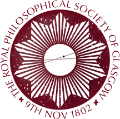History of the Society
The Royal Philosophical Society of Glasgow was founded in 1802, when the term ‘philosophy’ meant knowledge in the broadest sense.
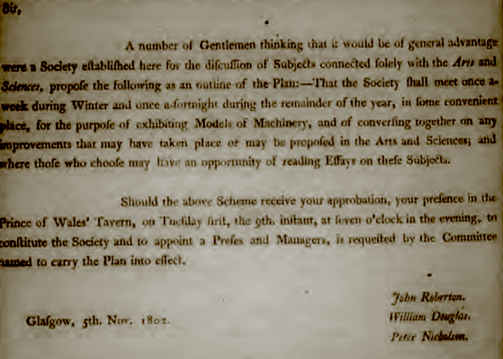
The Society provides stimulating lectures and discussion for members on a great diversity of topics.
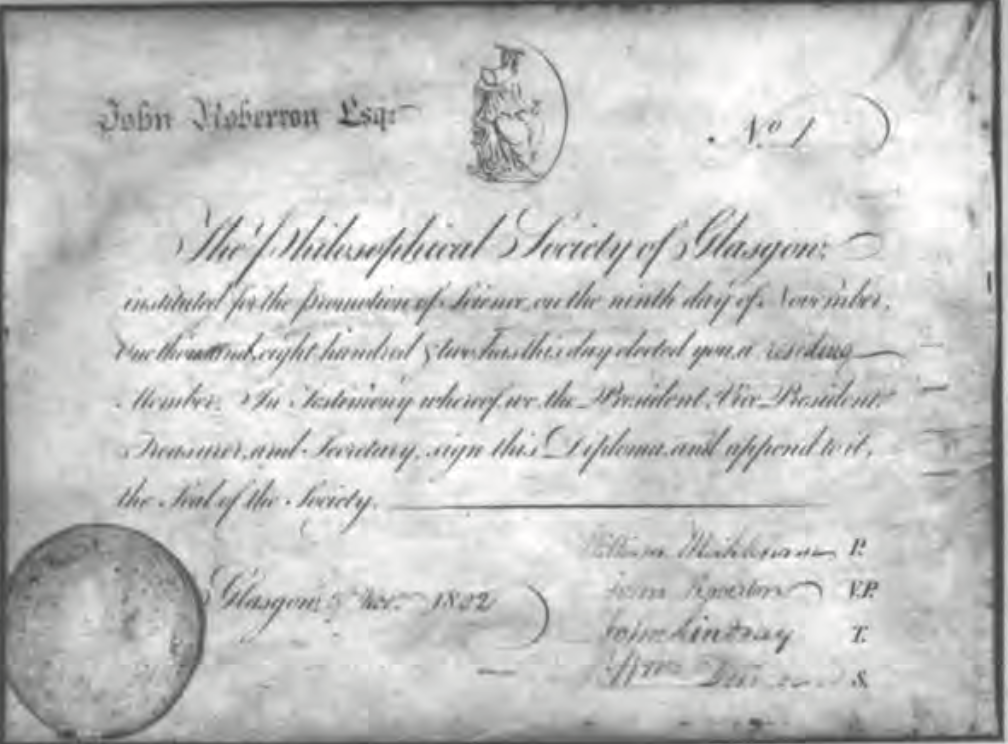
Beginnings
From the beginning it was intended that meetings would be held weekly in the winter and fortnightly in the summer and that members would present papers and exhibit models, artefacts, etc. However, attendances soon dropped off as many members had not prepared anything and on such occasions there was only general discussion. In fact, throughout the early years of the Society, membership fluctuated widely. There continued to be a steady trickle of new members but others dropped out, or did not renew their subscriptions.
In 1806, only 36 members had paid their annual fee, while in 1810, 114 paid up members were listed. By 1820, the loss of members was a worry and it was decided to reduce the entrance fee to one guinea. This had little effect and by the 30th anniversary in 1832, membership had fallen to 47 which included six of the original members.
No Mean Society
A book covering 200 years of the Royal Philosophical Society of Glasgow is available to download as a PDF.
Private Exhibitions
From time to time the Society held private exhibitions to which members and their scientific friends were invited. In 1845, the Society had joined with the City Council to bring to Glasgow an exhibition of `works of Art from Paris’ which had been bought by the Government and had been on show in London.
These were shown in the Government School of Design in Ingram St and the exhibition was so successful that the Society decided to hold another over the Christmas holidays with the primary object being ‘to interest the working classes’. This was opened in the City Hall on Christmas Eve, 1846 and ran for 17 days. There were free days and it was open on some evenings with the result that attendances reached almost 100,000.
A surplus of £462.6.2 was realised and this was invested with the Corporation as the ‘Exhibition Fund’. This was at the core of the Society’s increasing solvency, to the extent that in 1852 on its 5oth anniversary, general funds amounted to £346 – 16/d-and in addition there was over £570 in the Exhibition Fund; ten years later, it had increased to over £900.
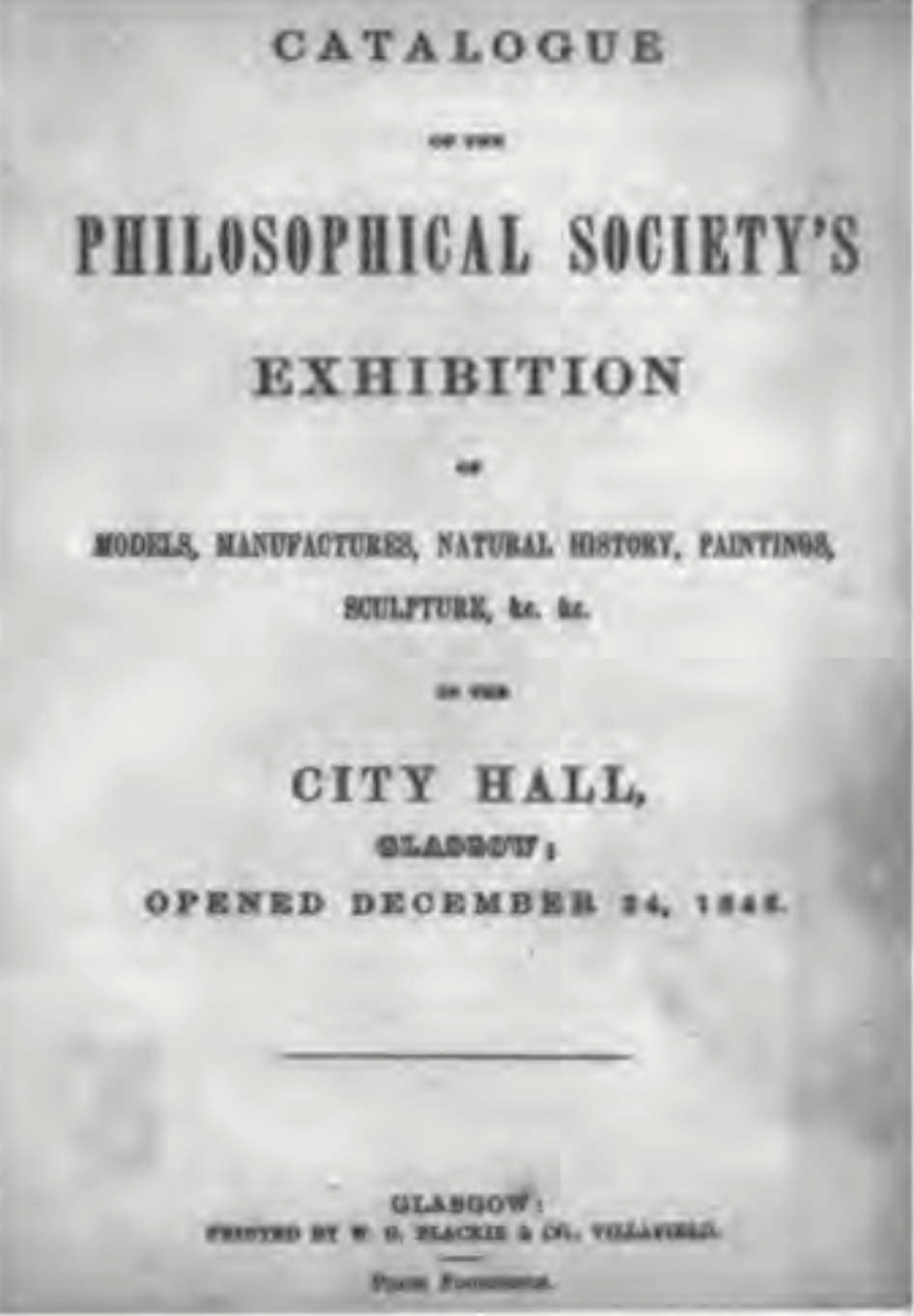
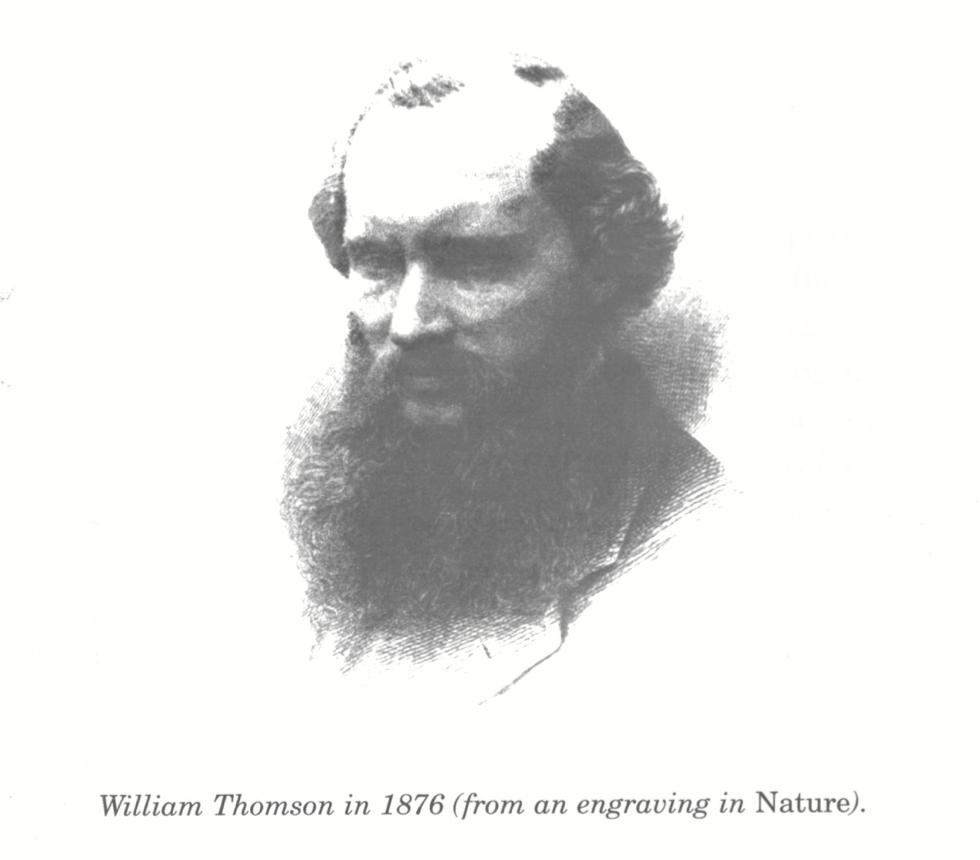
William Thomson, Lord Kelvin was rightly revered in his own time for his work across a range of scientific disciplines. Mathematician, theorist and experimenter, inventor and engineer, he was one of the founders of thermodynamics, the follower of Faraday in unifying the theory of electricity and magnetism, and the leading theorist, inventor and engineer in the development of electrical communication.
Thomson was born in Belfast in 1824, the son of Margaret Gardner and James Thomson who was the professor of mathematics in the city’s Academical Institution. After his wife’s death, James Thomson moved to the University of Glasgow in 1832, and his family were educated almost wholly by himself until his sons, James and William, were old enough (at twelve and ten respectively) to start attending university classes. James senior took an active interest in the Glasgow Philosophical Society (GPS) and became a member in 1839.
The Society also had a junior section and in 1841 John Thomson, son of William Thomson, Professor of Medicine (one begins to see why the Glasgow College was called the Thomsonian University), gave a talk on the steam engine with the demonstration of a working model built by James junior, who had in the previous year been secretary of the Models and Manufactures Committee for the 1840 meeting of the British Association in Glasgow.
In 1899, the Microscopical Society united with the Society. With the approach of the new century and the Society’s centenary in 1902, there was renewed activity, particularly amongst influential members of the society to raise its profile. As a result, a Royal Charter was granted on 23rd August 1901 and the Society’s name henceforth became The Royal Philosophical Society of Glasgow. In that year there were 365 new members. The Centenary was celebrated with a Conversazione and Exhibition in the new Kelvingrove Art Gallery, which was attended by over 3000 people, and by a civic dinner the following day.
The remainder of the property bond was paid off in this year. The Engineering Institute had been finding the building too small for both societies and it was agreed in 1906 that the Society would buy out the Institute’s interest in it for £4,000. The Institute would pay a rent to continue part use of the premises until it had built new premises. A new bond for £3,250 was taken out to help to pay out the Engineers. Reserves at this time amounted to almost £5,750.
Admission of Women
The question of admitting women to the Society had been raised in 1902 when it was decided by the Council, after discussion, that ladies `be not eligible for membership’. It was raised again in 1914 and the Council, having sought advice, decided that as membership under the Constitution was restricted to ‘persons’, this term did not include females!
It was also stated that there was no objection in principle but that some members were likely to resign if women were admitted. However, it took another 14 years before the Council agreed unanimously to admit women, with the first being Miss Muriel Gray in November 1932, followed by Miss Elizabeth Stewart, Miss Anne Fyfe, Miss Flannan Watson and Dr Violet Roberton.
Foundation and Development
A book covering the foundation and development of The Royal Philosophical Society of Glasgow is available to download as a PDF.
